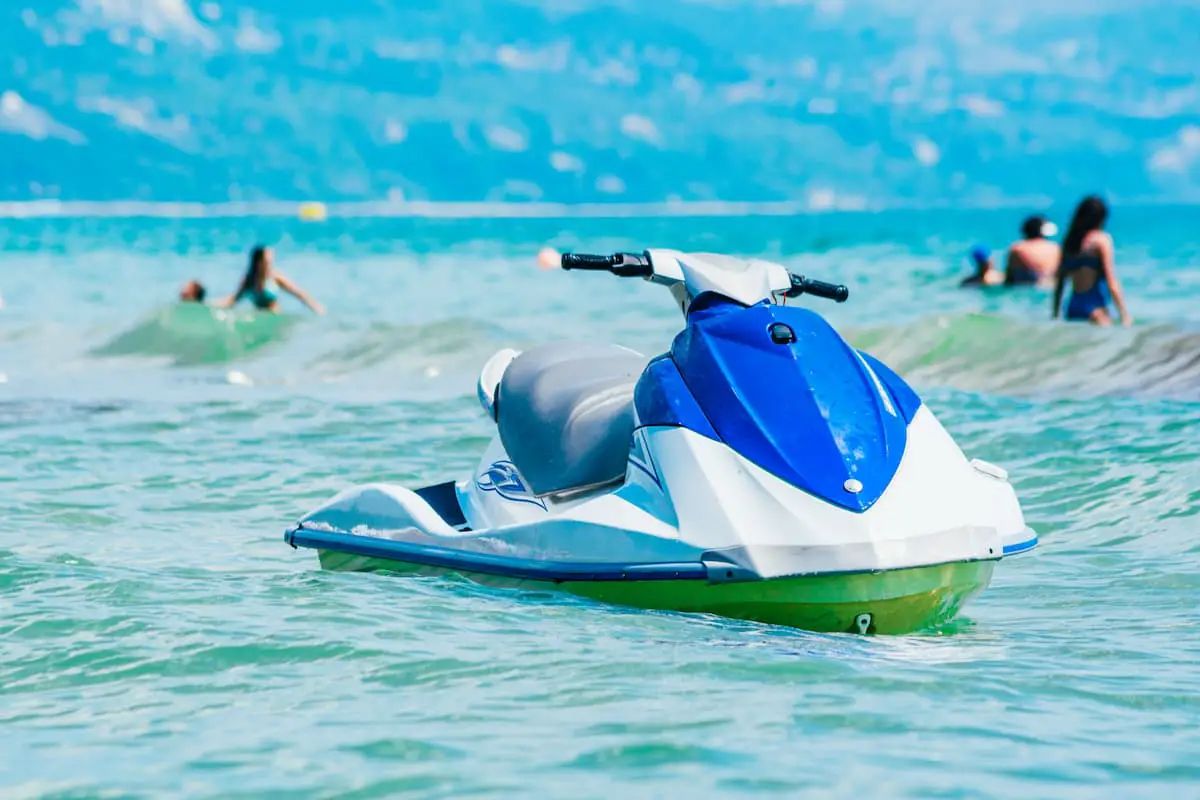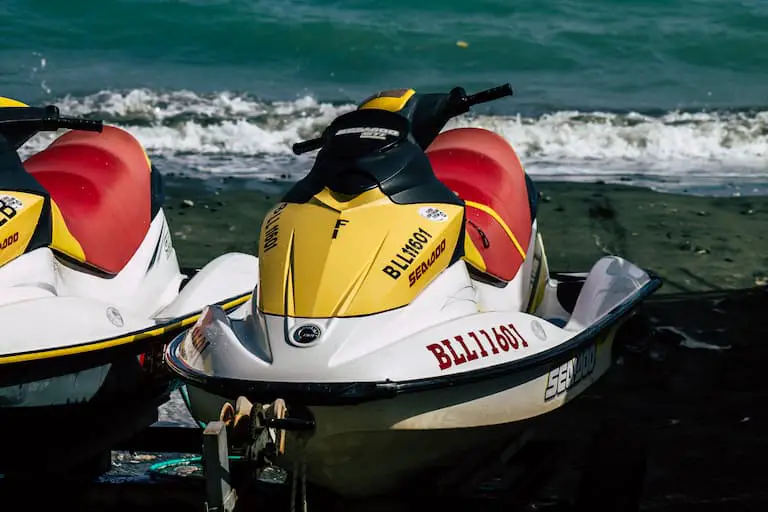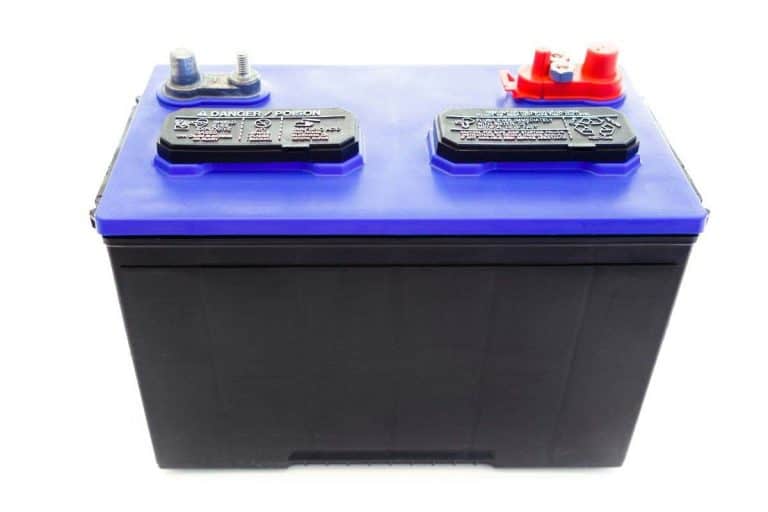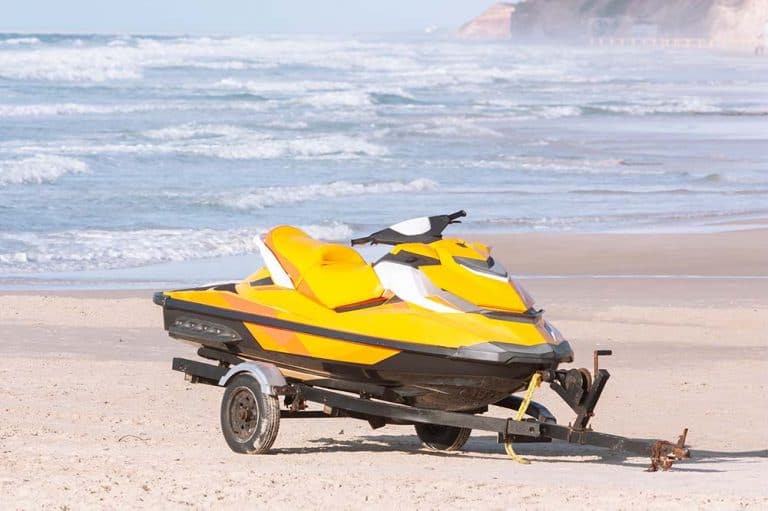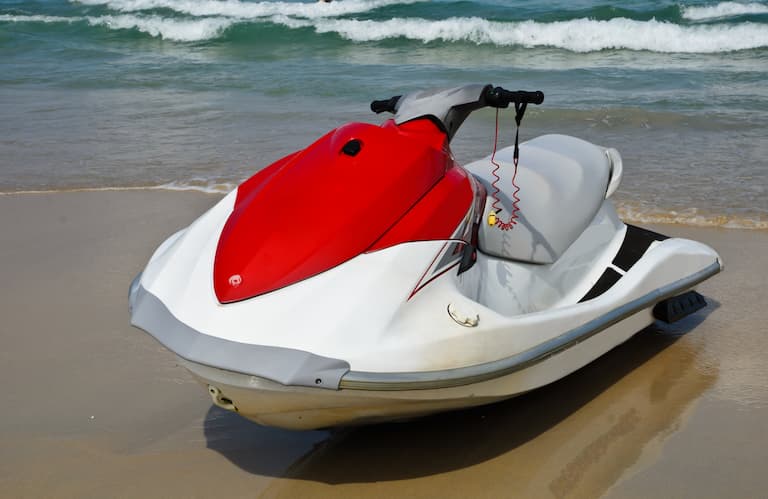Taking a Jet Ski in the Ocean (Saltwater & Jet Skis)
If you own a jet ski but don’t live near the ocean, you may not have given much thought to how saltwater can affect your PWC. Who thinks about saltwater on Lake Erie or Lake Tahoe? But if you live on the coast or decide to go there one day, there are some things about saltwater and jet skis you’ll need to know.
It’s perfectly fine to ride a jet ski in saltwater. However, you’ll need to clean the jet ski’s interior and exterior components after each ride to prevent the sodium chloride found in saltwater from causing corrosion.
Let’s call it good news and bad news. But really, the bad news isn’t all that bad. What we’re talking about here is some extra cleaning, plus a good flush. Keep reading for the details.
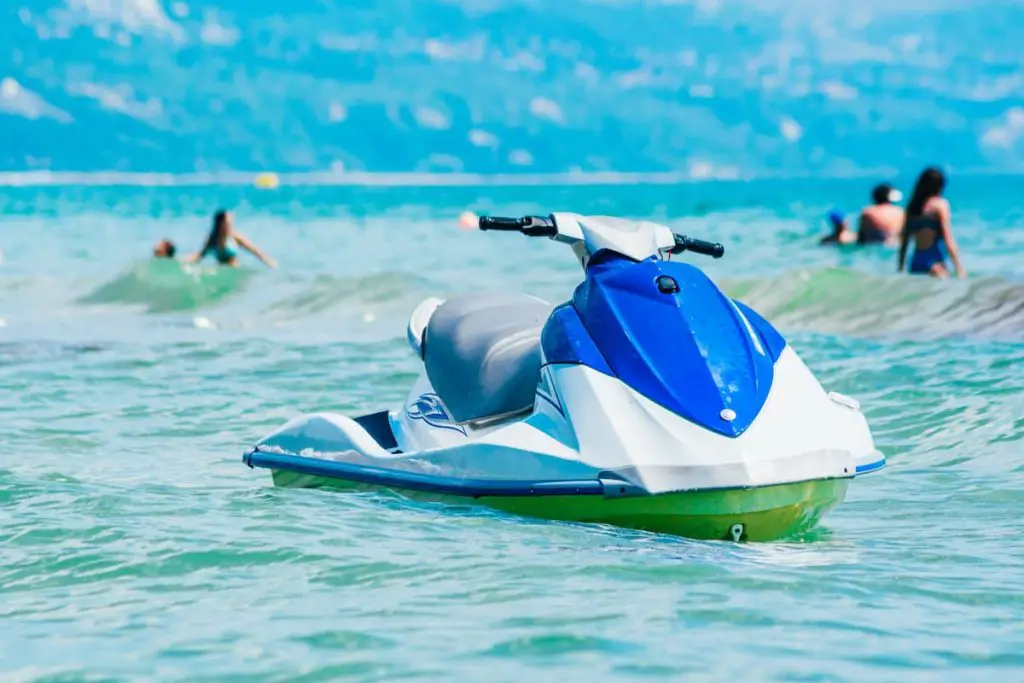
Can You Ride a Jet Ski on the Ocean?
To go jet ski riding on the ocean, you’ll first want to make sure the craft is large enough. Smaller jet skis sometimes come with recommendations not to take them out where things can get rough. But that’s not what this article is about. We want to know about saltwater.
Jet skis can be ridden on the ocean, though the saltwater will aggressively corrode its metal parts if not cleaned off. After each ride, you’ll need to clean your PWC’s hull, pump, and engine compartment. You’ll also need to flush the ski at its flushing port.
Truth be told, you need to do all of the above after every ride, be it in saltwater or freshwater. I’m yet to see a jet ski manual that doesn’t include this. So what’s the big deal with saltwater? Before we get into how to clean and flush your jet ski, let’s take a quick look at the properties of sodium chloride.
A Word About Saltwater
Most water on Earth is saltwater. To be objective, water makes up about 71% of the planet’s surface. Of that quantity, a whopping 97% is saltwater. And when you decide to take your jet ski for a cruise on this stuff, corrosion will happen faster. That’s not because saltwater makes metal rust, but because the ions in saltwater allow the electrons in metals to flow more quickly to oxygen.
Contrary to what the above explanation might make it seem, you don’t need to take a physics class to learn how to protect a jet ski from saltwater rusting. The cleaning steps are actually quite easy to follow.
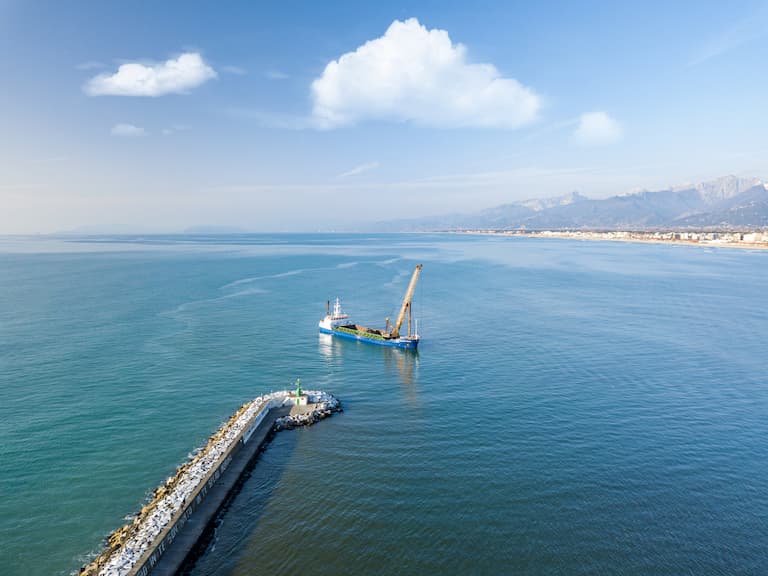
Let’s begin with freshwater flushing.
Freshwater Flushing for Jet Skis
After an ocean ride on your jet ski, you’re going to want to do a flush ASAP. That’s jet ski maintenance 101, and it goes for saltwater and freshwater. Even when all that nasty sodium chloride isn’t an issue, debris such as weeds, moss, or just plain old lake pollution can wreak havoc on the motor.
Now let’s go through the steps for a good jet ski flush.
- Mount the ski on a trailer or other level surface.
- Plug a garden hose into the flush port but DO NOT turn on the water.
- Fire up the jet ski, wait 10 seconds, then turn on the water.
- Let the ski run with water flowing for 3 to 5 minutes.
- Turn the water off and let the ski run for 10 more seconds.
- Shut down the ski’s motor.
It may help to have a friend along for this procedure. After all, 10 seconds isn’t much time. If you let the motor run on dry land for longer than that, it could overheat and cause expensive damage.
Here’s another essential thing to remember when flushing your PWC after a saltwater ride: Do not “jazz” the throttle to clean water out of the system before flushing. This will burn the sodium chloride onto every metal part it finds. Don’t do it, baby. That ski is an investment, and it gives you lots of fun.
Ready to clean the exterior? Yeah, let’s hit it.
Cleaning Your Jet Ski Exterior
An interior flush is imperative after every jet ski ride, but you shouldn’t forget the outer parts. That saltwater is attacking the exterior like gangbusters.
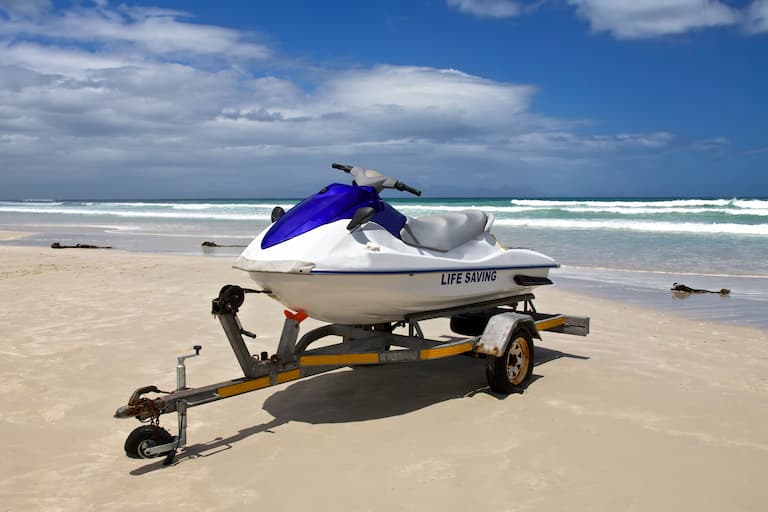
First thing’s first—take off the seat. Now remove the bung or bungs (drain-plugs) to allow excess water to escape the ski. From here, we can move on to some serious cleaning:
- Mount the ski on a trailer, then tip the nose up to allow excess water to drain. (Remember: Bungs off.)
- Give that beast a good hose-down with a regular garden hose, keeping moisture away from the fuel intake and any other electrical parts.
- Now wash it by hand with a sponge, getting as much saltwater off as you can.
- Spray off the trailer, too, as saltwater from the ski has likely been dripping on it for a long time.
And you’re done. Nice job. Put the ski back together and pine away for the next great ride.
Running a Jet Ski on Dry Land—A Caveat
Before we close things down for the day, I’d like to say a word about running jet skis on dry land. The inclusion is necessary because, yes indeed, cleaning your ski is going to happen on dry land, not while still bobbing on the waves.
Running a jet ski motor on dry land is generally considered a big no-no. Most of them use water to cool their motors, which is why that garden hose hookup exists at the back of the hull.
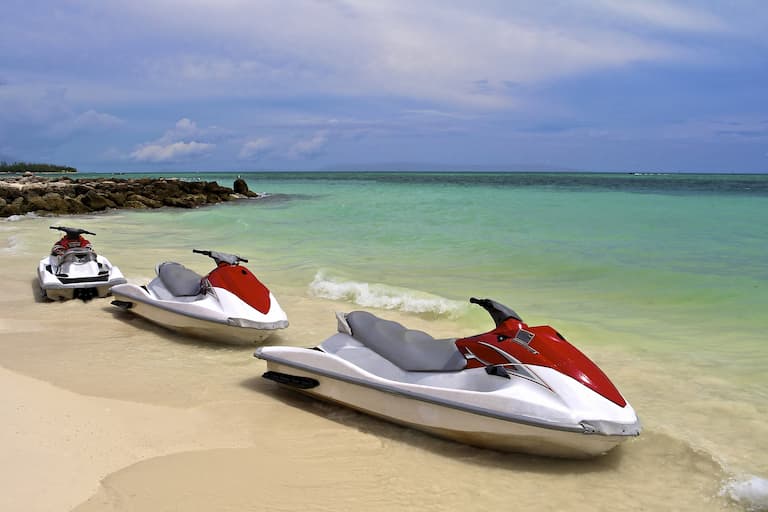
Never run a jet ski motor without a garden hose for longer than 10 seconds on dry land. Your PWC’s manual will go into greater detail about when and how to run the motor. But for my money, 10 seconds is the max.
Taking a Jet Ski in the Ocean – Conclusion
Saltwater is a highly aggressive corrosion agent. That being said, running your jet ski in the ocean is fine. Just don’t forget to clean both the interior and exterior after every single ride.
Every jet ski manual has cleaning instructions should you decide not to trust how brilliant I am with these things. Either way, the lesson is easy: Keep it clean and have a good time.

